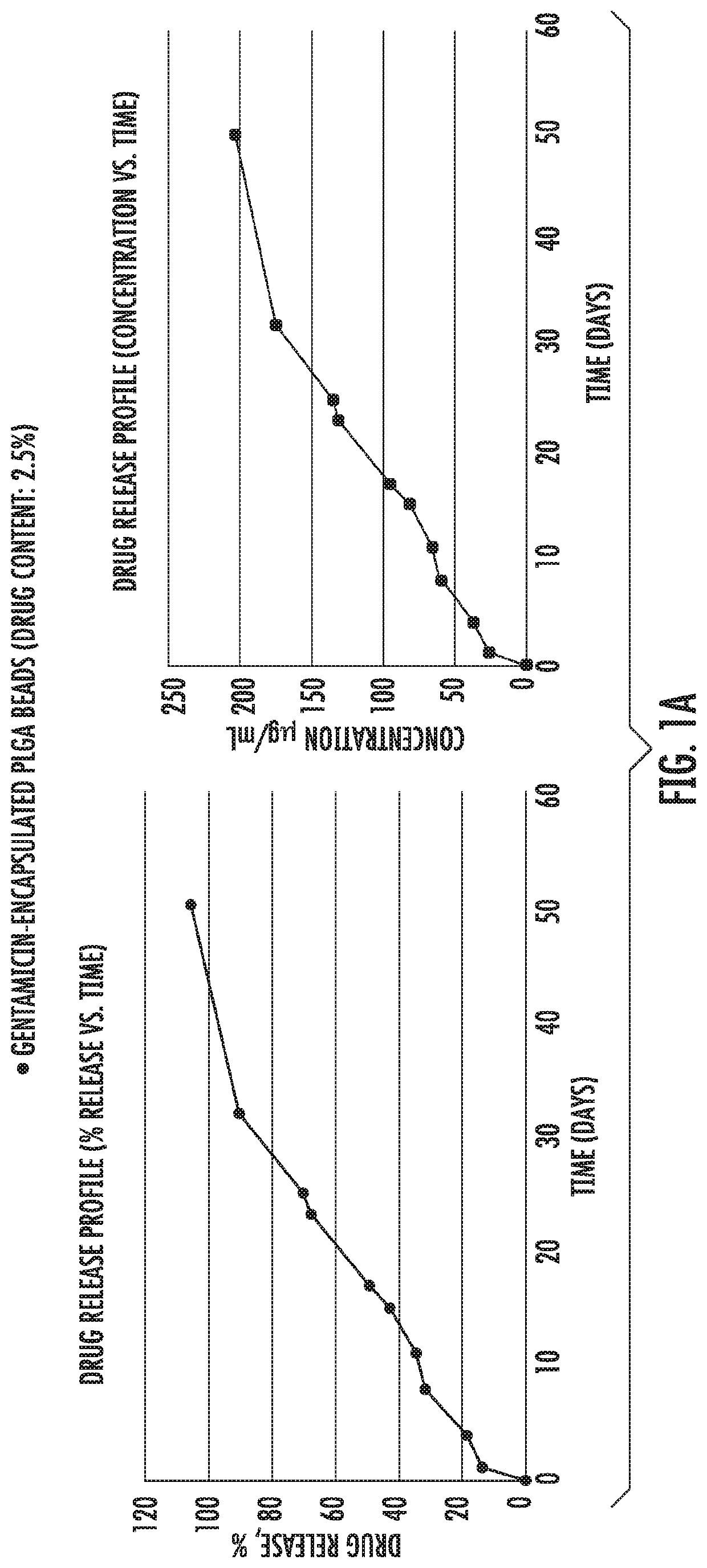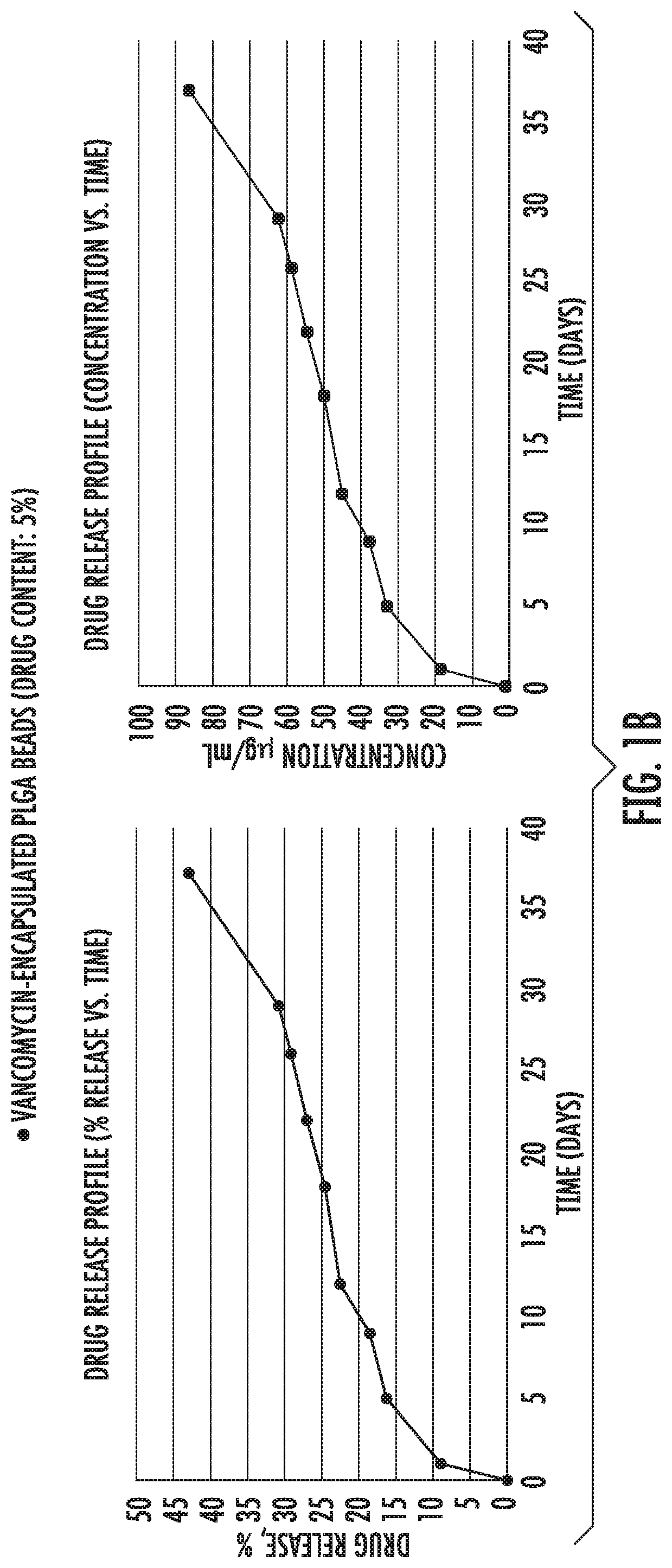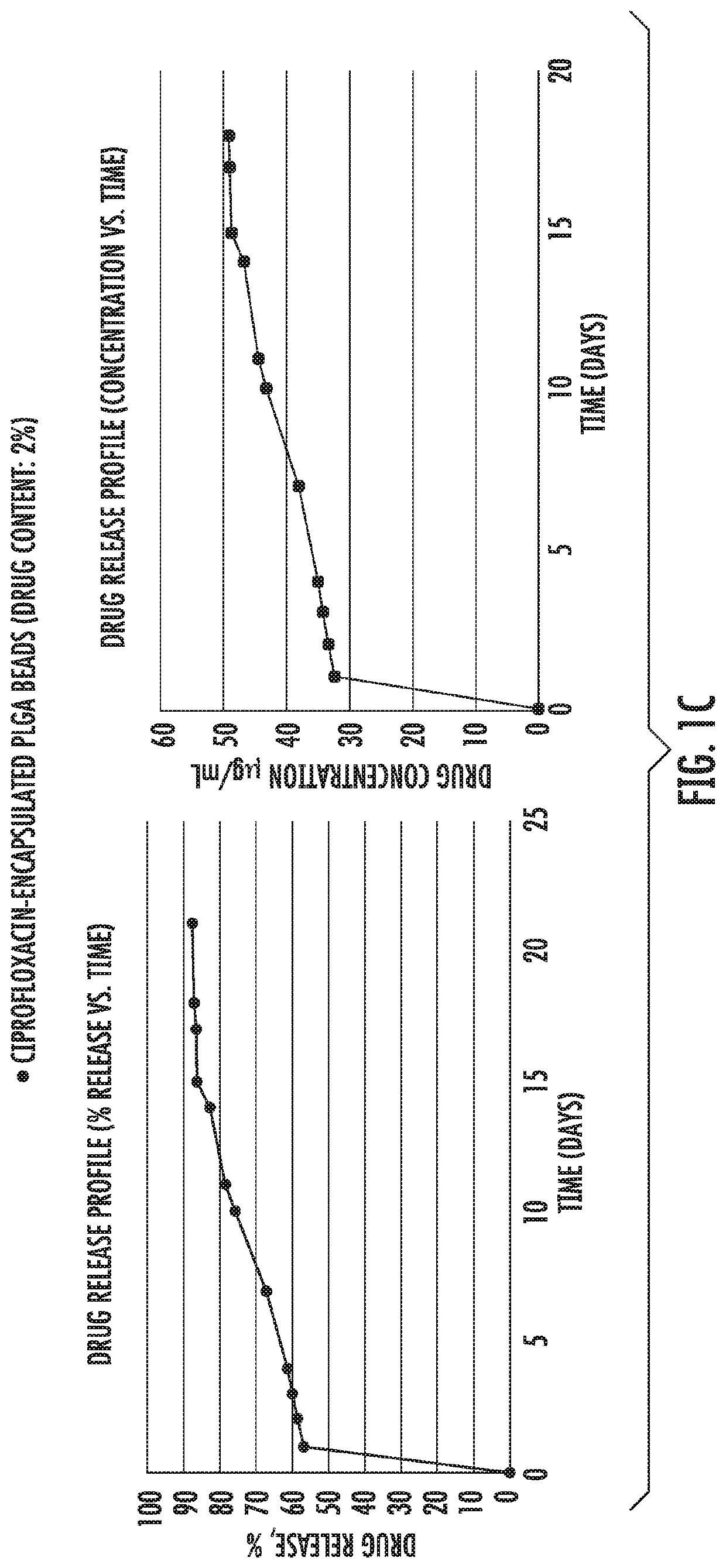Composition and method for controlled drug release from a tissue
a technology of controlled drug release and target tissue, which is applied in the direction of antibacterial agents, prostheses, bandages, etc., can solve the problems of reducing the effective surface area, certain tissues remaining untreated, and the background art does not offer a solution, so as to improve the mechanical properties of gelatin hydrogels, improve the effect of tissue response and safe us
- Summary
- Abstract
- Description
- Claims
- Application Information
AI Technical Summary
Benefits of technology
Problems solved by technology
Method used
Image
Examples
example 1
[0082]Example 1 shows in vitro release of antibiotic drugs [gentamycin (FIG. 1a), vancomycin (FIG. 1b) and ciprofloxacin (FIG. 1c)] from microparticles into PBS buffer. As shown, initially there was a burst release followed by a slower and constant release rate that followed zero order kinetics from 21 days up to at least 30 days.
[0083]PLGA (50:50) polymers, Resomer RG 503 H were purchased from Evonik Industries. Ciprofloxacin HCl, vancomycin HCl, gentamicin sulfate salt, polyvinyl alcohol (PVA, MW˜31,000), dichloromethane (DCM), paraffin oil, acetonitrile (ACN), Span 80, hexane, monobasic sodium phosphate dihydrate, NaOH, ninhydrin, PBS, Mueller Hinton broth and LB agar were purchased from Sigma Aldrich. All the materials were used as received.
Preparation of Antibiotic-Encapsulated PLGA Beads
Vancomycin / Ciprofloxacin-Encapsulated PLGA Beads
[0084]Vancomycin / ciprofloxacin-encapsulated PLGA beads were prepared by a double emulsion water-in-oil-in-oil (W / O1 / O2) solvent evaporation techn...
example 2
[0093]Example 2. shows release of ciprofloxacin from PLGA microparticles embedded in enzymatically crosslinked gelatin matrix. The release of the drug is somewhat slower When the MPs were embedded in gelatin matrix compared to free MPs (FIG. 2), this may be explained by the additional diffusion that is required from the drug inside the gelatin matrix after it has eluted from the MPs. Entrapment of microparticles in enzymatically crosslinked gelatin hydrogel was performed as follows.
[0094]160 mg of ciprofloxacin-encapsulated PLGA beads were added to 2.7 gr of enzyme solution. This solution was mixed with 5.0 gr of gelatin solution. 0.25 gr of the mixture was cast in a glass vial, and curing occurred at 37° C. for 15 min. 5 mL of PBS was added to the vial to wash the gel. An additional 5 mL of PBS was added and the vial was placed in an orbital shaker incubator at 37° C., where it was shaken at 120 rpm. Once a day, 1.5 mL of the cured gel extract was centrifuged and 1 mL of the supern...
example 3
[0095]Example 3 shows the anti-microbial activity of crosslinked gelatin hydrogel containing MPs with either gentamycin or vancomycin entrapped within the MPs. The bacteria used was Bacillus subtilis, which serves as a model microorganism for grain positive bacteria. Gels that were incubated in saline for 14 days still had enough drug remaining within the matrix to induce bacteria killing, as can be seen from the ring around the gel, in agar diffusion (Kirby-Bauer) assay (FIG. 3A) or the concentration of the eluted antibiotic drug which was considerably above MIC throughout the study (FIG. 3B). The data is summarized in FIG. 3C.
Antibacterial Activity Against bacillus subtilis (ATCC 6633, Microbiologics #0486)
[0096]6 discs of 0.2 gr crosslinked gelatin containing 2% vancomycin / gentamicin-encapsulated PLGA beads were casted in plastic mold of 12 mm diameter. After 15 min of curing at 37° C., the gels were separately placed in glass vial filled with 1.5 mL sodium phosphate buffer. The ...
PUM
| Property | Measurement | Unit |
|---|---|---|
| size | aaaaa | aaaaa |
| size | aaaaa | aaaaa |
| elution time | aaaaa | aaaaa |
Abstract
Description
Claims
Application Information
 Login to View More
Login to View More - R&D
- Intellectual Property
- Life Sciences
- Materials
- Tech Scout
- Unparalleled Data Quality
- Higher Quality Content
- 60% Fewer Hallucinations
Browse by: Latest US Patents, China's latest patents, Technical Efficacy Thesaurus, Application Domain, Technology Topic, Popular Technical Reports.
© 2025 PatSnap. All rights reserved.Legal|Privacy policy|Modern Slavery Act Transparency Statement|Sitemap|About US| Contact US: help@patsnap.com



